Sustainable fashion is being conscious of the environment by buying eco-friendly fabrics, recycling, and buying gently used clothes, or upcycling your own clothes.
That’s my definition of what sustainable fashion means and after learning that, I realized I’ve been into this fashion trend forever.
One thing I used to be ashamed of is being a thrifty. A thrifty is someone who saves money, resources, and items. Though I don’t reuse tea bags, trash bags, or anything like that, I love thrift shopping.
Not because I’m cheap, but because it gives me a chance to explore many clothing options from decades ago to what fashion is right now. I also like upcycling my clothes to give me a new purpose, and recycling them when I’m done.
Let’s see what sustainable fashion really means and why I love the lifestyle.
Reasons Sustainable Fashion Exist
The sustainable fashion trend, well, it’s more of a lifestyle exists due to what we consider fast fashion. Fast fashion is when the demand for making clothes is so high, due to the ever-changing fashion trends, workers are fastly creating garments, while consumers are quickly throwing them away.
Fast Fashion Is Out of Hand
In my opinion, fashion today is like reels on Instagram – your attention is on each video for 15 seconds tops and then you’re swiping to the next one. That’s how fast fashion is. We see a cool new trend and next thing you know, you start seeing it online and in stores.
But after a month or two, that trend is dead and the birth of another one is here. So what do you think happens what all those clothes and shoes in the closet? They get unworn and forgotten about.
And when it’s time to clear out closets during the spring and fall seasons, people throw those clothes away in the trash, instead of recycling them.
Organizations like Earth Day are over it! They are so over it, they have an active petition going to change the fashion industry. And I for one who loves fashion, can get behind this!
Overworked and Underpaid Workers
Because I think about those seamstress overseas who are overworked and underpaid, sleeping on the floor during their break, sitting in those chairs while their bums are hurting, slaving over the latest mini skirt frenzy.
When I found out those workers were being paid less than minimum wage in their country, I was shook. We here in the United States are upset when we are being paid less than minimum wage, so to think they are working hard, hoping to put enough food on their tables is crazy. And all for the latest mini skirt.
It makes me think differently about how often I buy clothes and how many ways I can wear them. Because I want to make it worth my money, and the worker’s time. While most won’t think about this, I will be the 1 percent who donates my clothes to be recycled.
People Buy and Throw Garments Away
Speaking of buying and throwing away clothes, people tend to forget about thrift stores. Places like your local Goodwill and Salvation Army will gladly take your gently used clothes, shoes, and accessories for the next person like me to buy.
Because when you don’t recycle, they end up in the trash, along with your other household trash. And although they are out of your eyesight, they become waste somewhere else. That’s the landfills, where there are mountains on top of mountains of trash.
Landfills Are Full of Clothes
Landfills are places where our trash is dumped. While they are intended to protect our environment from contamination, they are also heavily polluted. Earth Day says that over 87% of clothes end up in landfills.
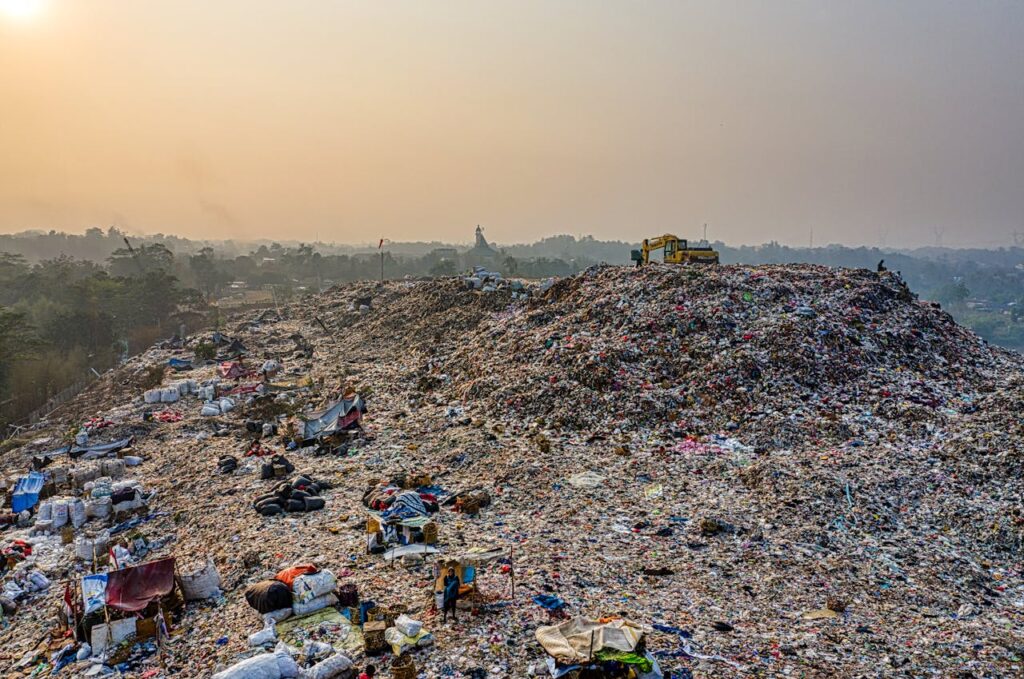
Do you know the amount of stink and funk those landfills have? I mean let’s be real, our clothes stink when sitting in the dirty hamper for a week, so imagine dirty clothes sitting amongst other trash in those landfills, and the smell that’s created.
Yuck!
Limited Resources
When it comes to fabric, there are limited resources available for our clothes. And that’s why most of our clothes are made in other countries because here in the United States, we don’t have all the resources available like they do.
Some of the biggest textile-making countries in the fashion industry are China, Pakistan, India, South Korea, and Indonesia. That’s why you see “Made In China” on the tag of your clothes because they make the fabrics and the clothes.
But!! Since we import a lot of fashion here in the US, the amount of gas emissions used is a bit ridiculous. “A predicted rise in volumes could push carbon emissions to around 2.7 billion metric tons a year by 2030 if no abatement actions are taken” – McKinsey & Co.
That’s a bit much if you asked me. But we do it anyway, and it gets done, but organizations like Earth Day and McKinsey are suggesting ways to make it better.
Ways To Become A Sustainable Fashionista
Recycle Unused or Unwanted Clothes
When you’re done, over, or can’t wear your clothes anymore, you should recycle them at your local thrift store. You can pack them up in a bin or bag and donate them to your Goodwill, Salvation Army, Boys and Girls Club, or Rescue Mission.
Or you can find specific organizations that will take them, like Mommy and Me consignments, churches, the VA, and more.
To help you pack up your old clothes, make sure to put them in a bin or bag that’s heavy-duty and solid. A trash bag is a good choice if you don’t have anything else at home. If you are donating clothes from the family household, you can separate them by adult women, adult men, baby and toddler, and young children.
Lastly, check the pockets of all clothing. You may have leftover gum, money, receipts, or other items in them.
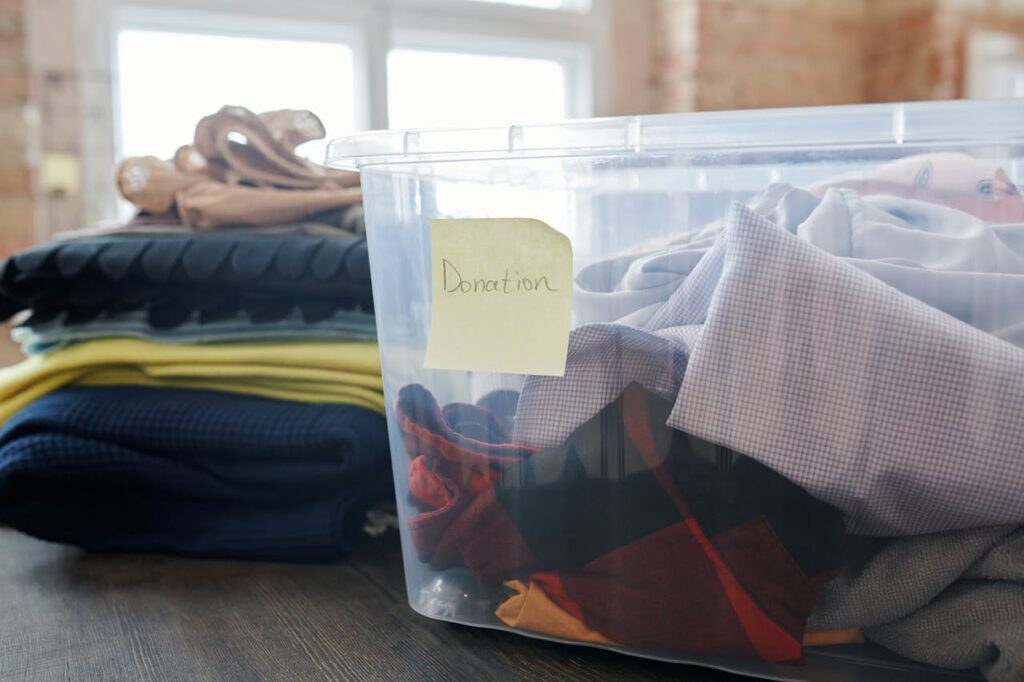
Buy Eco-Friendly Fabrics
If you are vegan or want to only wear fabrics that are safe for the environment, invest in eco-friendly fabrics such as organic cotton, linen, wool, and hemp. Since cotton is the most popular material used for most clothes, it is the safest option compared to other fabrics.
It’s good to know that wearing cotton is way better than polyester. Yes, I love wearing it because it looks good and feels good on my body. But if you want to go all out on sustainable fashion, try to keep polyester on the rack.
Most likely, it uses non-reusable oil to make, which contributes to the emissions greenhouse effect on the environment, and it takes a very long time to decompose in landfills.
Personally, I don’t mind wearing different fabrics, however, I also keep my clothes for years and donate them when I’m done. So it’s a 50/50 effort.
Buy secondhand clothing
Not only do I recycle my old clothes, I buy your recycled clothes through secondhand clothing stores. Thrift stores are what I like to call them. While many turn their noses at the thought and smell of thrift stores, I have a different vision.
The benefit of buying secondhand clothes is the beauty of trying on and off season clothes. If you are a true fashion lover, you will see the vision of any item and make it work for you.
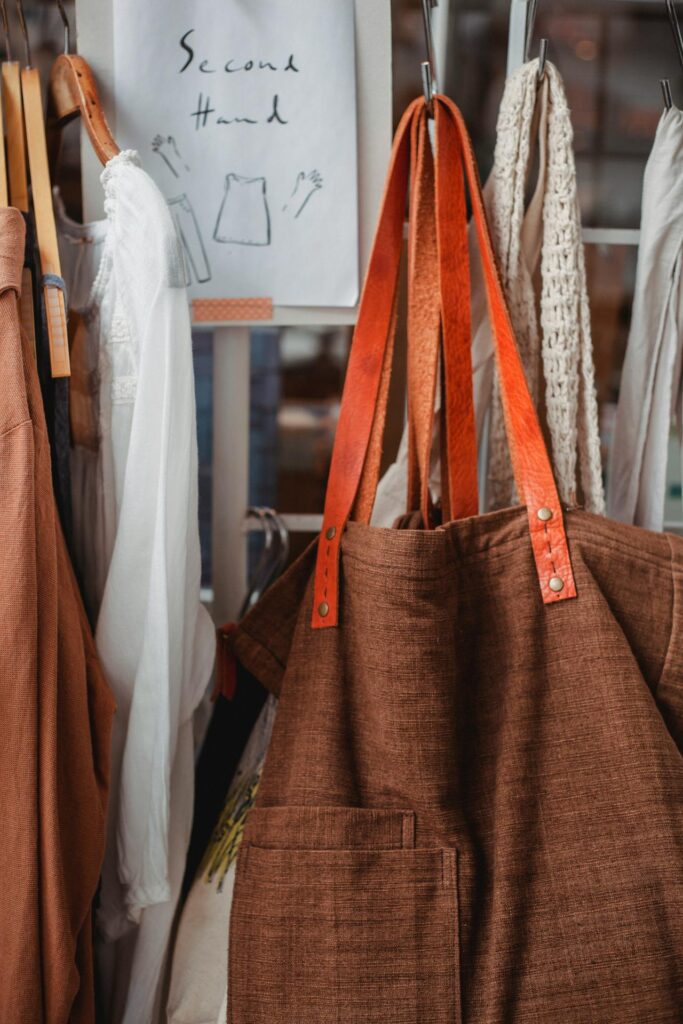
Not only that, you save a lot of money on designer brands. There are many times I found Calvin Klein, Nike, American Eagle, Abercrombie, SHEIN, and more all marked down to $10 and under at Goodwill. I’m just saying… Oh. I’ve found Coach and Michael Kors bags for $25!
All while reducing waste by keeping them in closets, and away from landfills. And if you are worried about the ick of wearing other people’s clothes, you can strip them of their ick by soaking them with white vinegar and baking soda before putting them in your washing machine.
Upcycle gently used clothes
Ever heard of upcycling? Me neither until I found out it takes fashion creativity in a whole new light. Upcycling is when you repurpose your old clothes by repairing, altering, and creating something new out of them. Something I’d already been doing before learning it was a thing.
Have you been upcycling your clothes already? Here’s a checklist to go over:
- Cut pants to make shorts
- Added embellishments on clothes
- Repaired holes in clothes
- Turned a t-shirt into a tank top
- Make a shirt into a crop top
- Added iron-on patches to clothes
- Turned an old sweater into a scarf
- Sewed a bra on top of a shirt (woah)
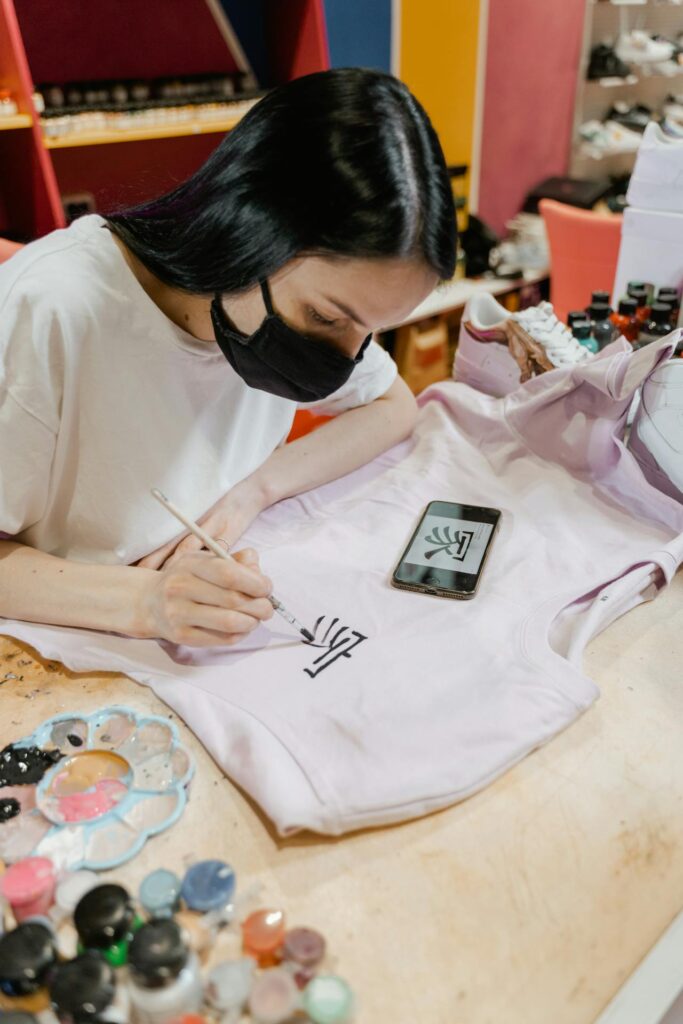
Though there are many more ways to upcycle, I admit to doing most of these things to my clothes. And when it comes time when you need to change certain clothing items, you can cut it, add a design, or create something totally new.
Buy From Designers Who Value Sustainable Fashion
If you are ready to ditch certain fashion brands, and embrace a more sustainable friendly brand, start with fashion designer Nigel Xavier. I personally love streetwear with a twist of other styles, so when I saw Nigel in Netflix’s show Next in Fashion Season 2, I fell in love with his designs.
Nigel takes recycled fabrics from secondhand stores and turns them into a work of art for the body. You can find his designs on his website or Rent the Runway.
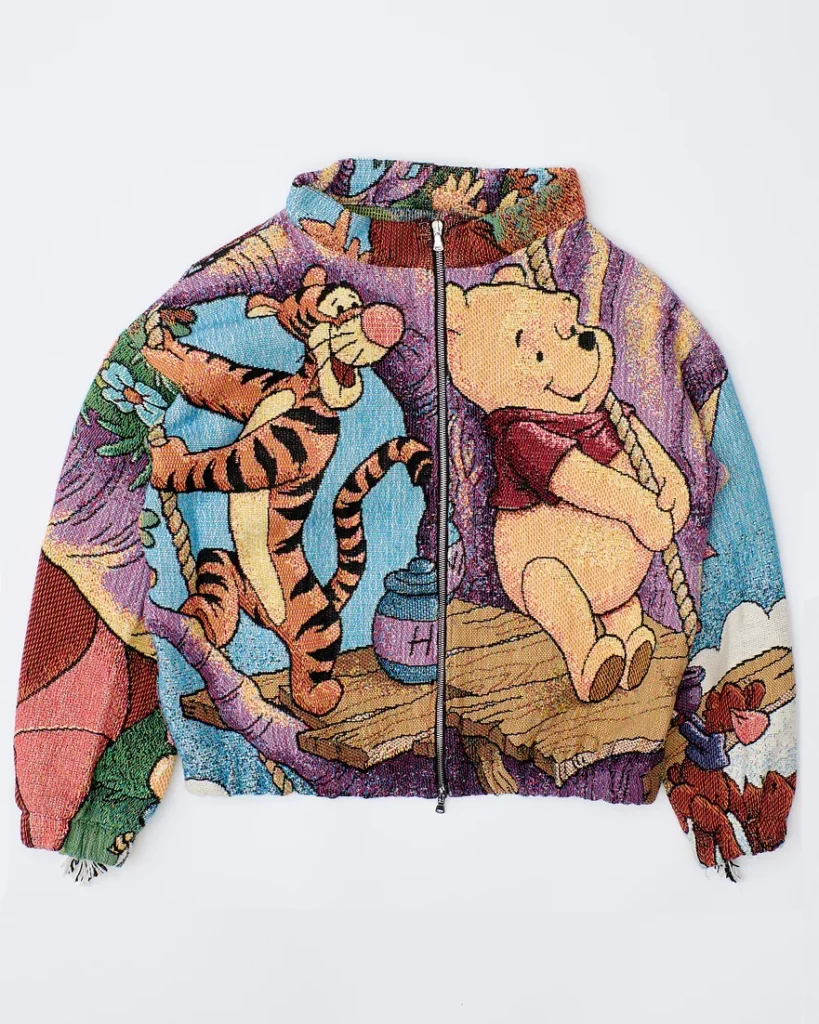
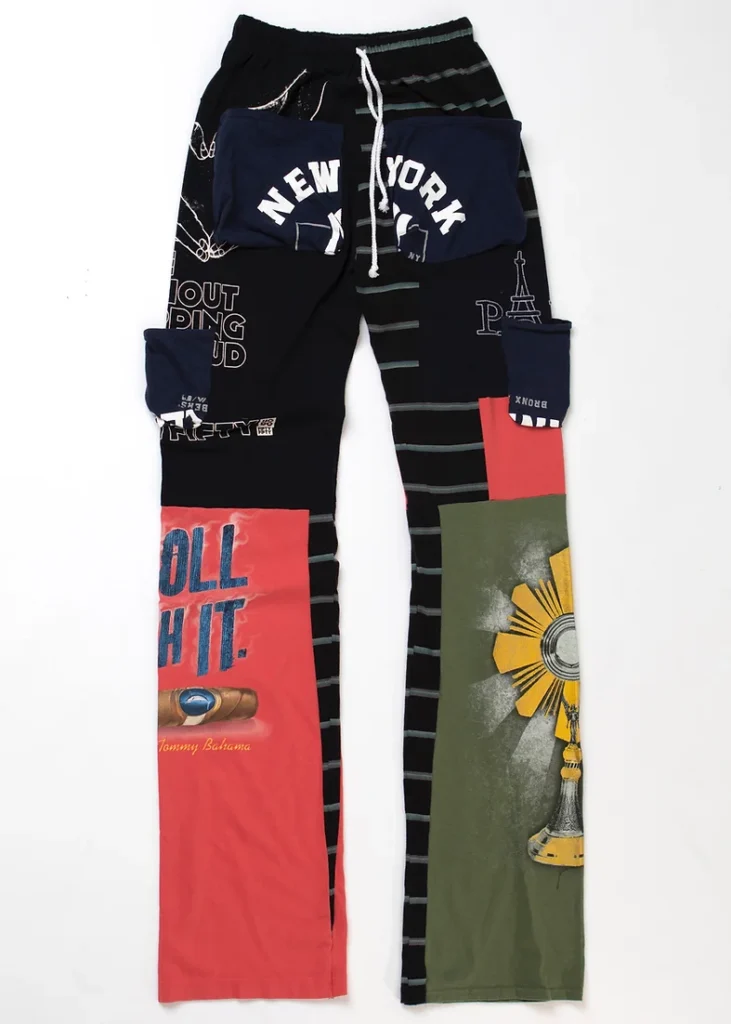
If streetwear isn’t your thing, I’ve found a resource that gives you 99 Sustainable Clothing Brands to choose from based on your budget.
If you like this post, give me a star.

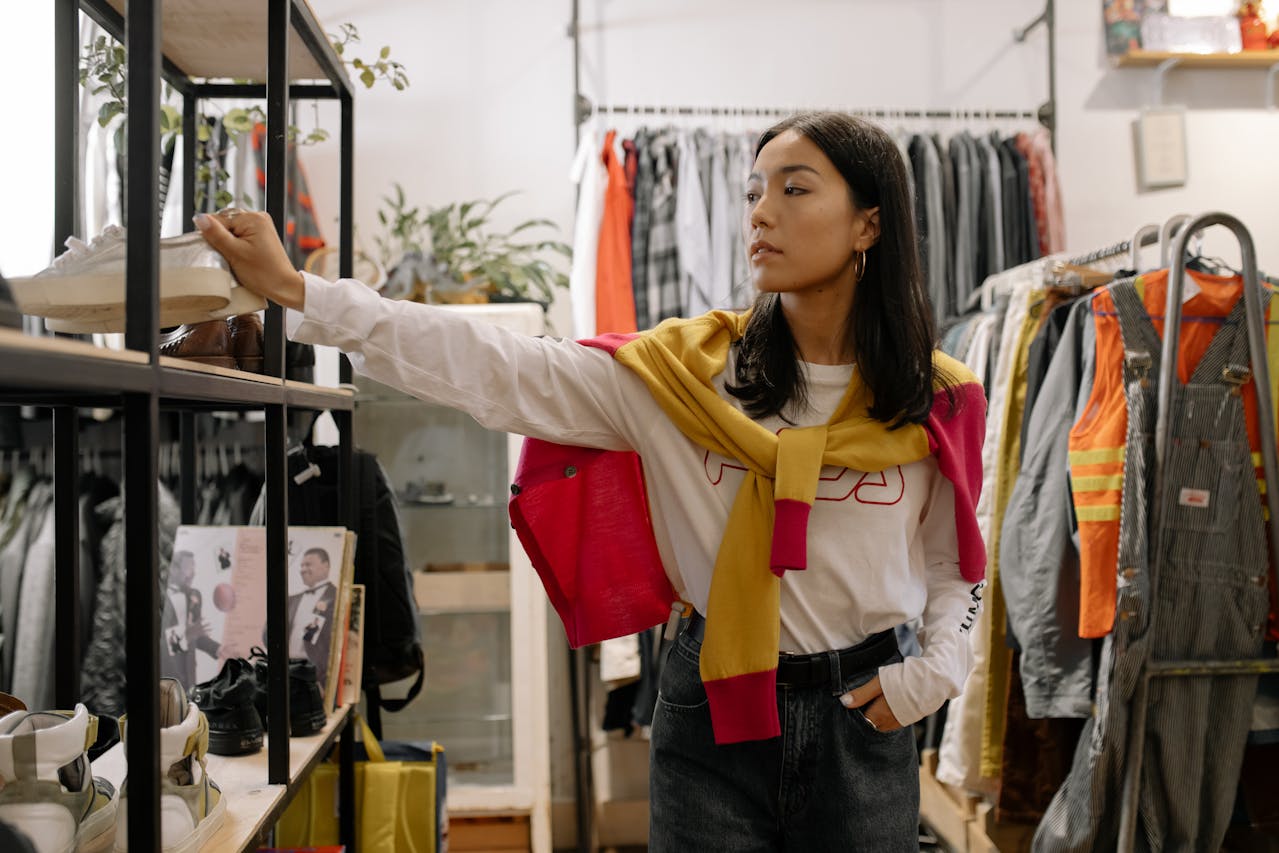

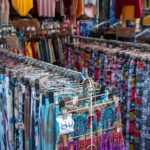



Leave a Reply